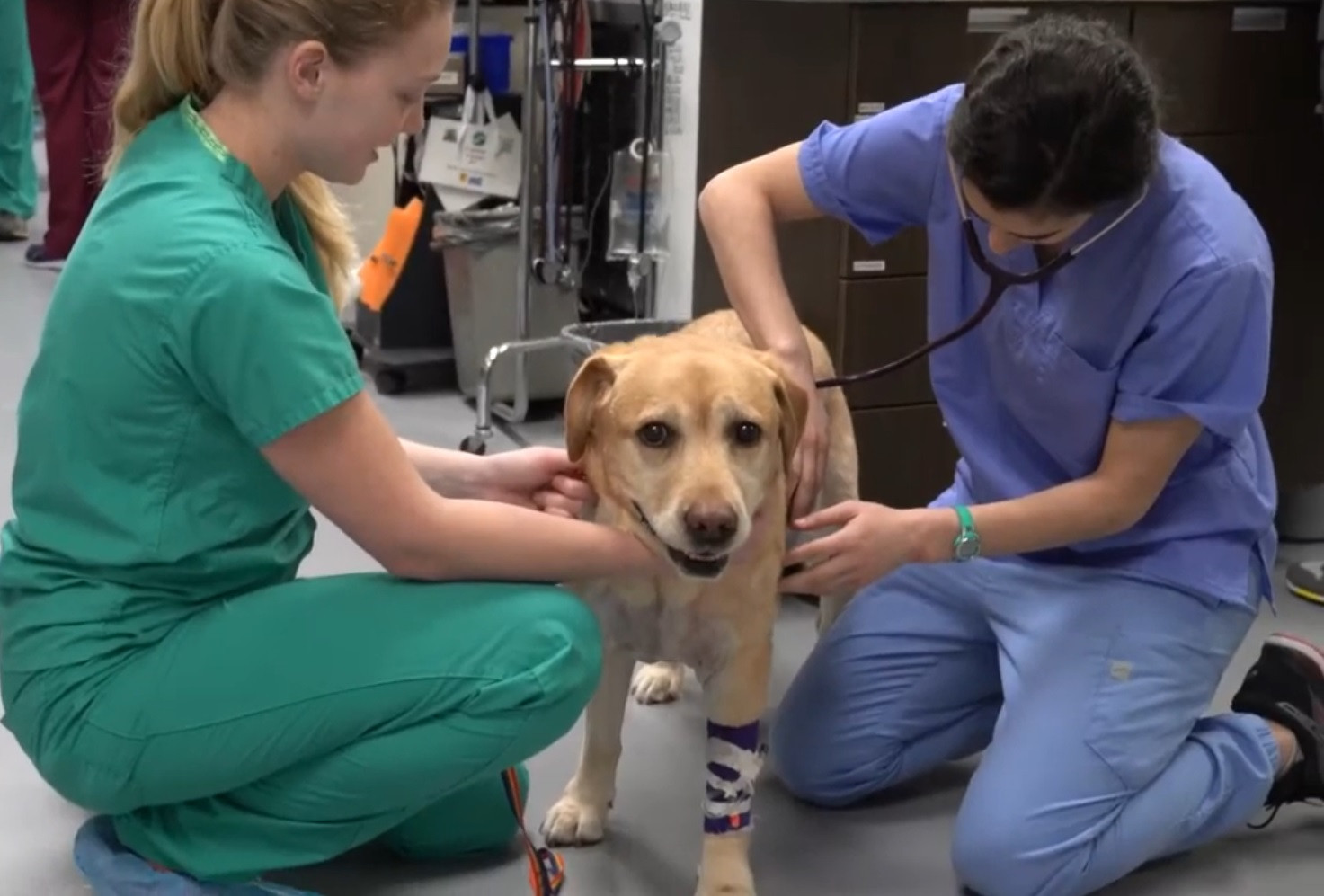A seven year old Labrador Retriever named LucyHe began to pass out regularly at the end of last year. Its owners, the Baginski family, were concerned about this unusual behavior. “There were some times when he got disoriented, and other times he fell to the ground playing,” he explains. David Baginski.
In their search for answers, the family went to the Veterinary School of Cornell University (United States). There, cardiologists performed the animal on a 3D echocardiogram that showed a tumor.
Lucy periodically collapsed and passed out due to the inability of his heart to oxygenate “, he points out Galina Hayes, assistant professor of small animal surgery.
Veterinarians were concerned that even if the cancer itself was not terminal, the effects of the tumor might be.
Hayes assures that “I have never seen a case like this in my career. There may be a total of three of these cases reported in the veterinary literature. ” As he explains, “the mass was blocking the outflow of blood. If you imagine that the ventricle is like a pump, it would be as if something was caught in the hose. ”
UNION OF HUMAN AND ANIMAL MEDICINE
To address this problem, the veterinarian contacted the Spanish veterinarian Luis Campoy, section chief of anesthesiology and pain management at Cornell University College of Veterinary Medicine.
Campoy in turn contacted his counterparts at the Weill Cornell Medicine Department of Anesthesiology in New York City to brainstorm the options. So, Maria Walline, a Weill Cornell Medicine cardiothoracic anesthesiology fellow, left to help with Lucy’s anesthesia.
“We knew this would be a high risk procedure, more dangerous than it would be with a human patient because it was not possible to use cardiopulmonary bypass for Lucy, ”says Walline, who completed a fellowship in pediatric anesthesia and is currently completing a fellowship in adult cardiothoracic anesthesia, two fields that line surprisingly well with veterinary medicine and this particular case. “The profiles of patients are similar in pediatric and veterinary anesthesia: You are treating a patient, usually smaller in size than an adult, who is not verbal. “
OPEN HEART SURGERY
Open-heart surgeries are more common in human patients, largely due to human hospitals’ access to cardiopulmonary bypass machines, which can redirect blood flow over an extended period of time. The most animal hospitals lack this technology, so Lucy’s care team was left with one option: open heart surgery without the safety net of a cardiopulmonary bypass machine.
In this way, surgeons had to make the procedure exceptionally short, as the amount of time a body can survive and recover when the heart is not working is limited. “At most, it’s about four minutes,” says Hayes.
The surgical team had a four-minute window to stop blood flow to the heart, make the incision to remove the mass, close the ventricular wall, and release the blood so it can flow again.
“It had to happen like a clock,” Campoy explains. “For a procedure like this to be successful, everyone has to perform their roles perfectly at the perfect time, even more than usual ”, he adds.
In four minutes, surgeons removed approximately 90% of the mass that threatened Lucy’s heart. Although the most critical moments of the procedure occurred during those four minutes, the entire operation took approximately five hours.
Finally, Lucy spent the first night after surgery in the intensive care unit, and three days later, once she was considered stable, she was able to go home.
After her operation, Lucy stopped passing out every day and quickly returned to her previous state. “When we go for a walk today, she never tiresIt is back to how it was two or even three years ago, ”says Baginski.
According to the experts, Lucy had an ectopic thyroid carcinoma. “In this case, you’re lucky: Targeted therapy that has few side effects and minimal risk can remove the remaining 10 percent of the tumor.”
–


